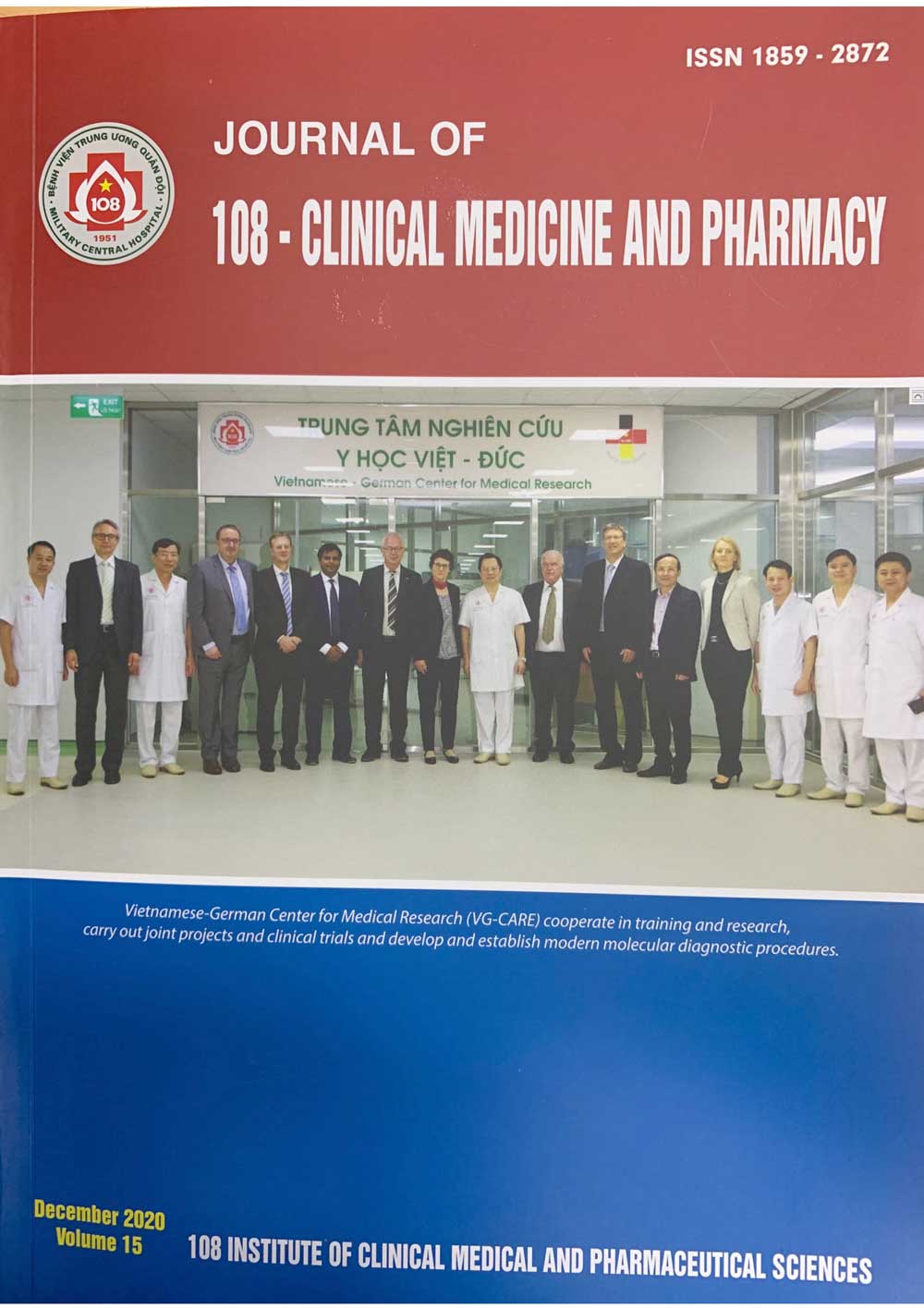Apnoeic oxygenation with high‐flow oxygen for tracheal resection and reconstruction
Main Article Content
Keywords
Tóm tắt
Objective: This study aimed to evaluate the effectiveness of high‐flow oxygen as the sole method of gas exchange in apnoeic conditions during anastomosis construction. Subject and method: Between April 2019 and August 2020, 16 patients with tracheal stenosis, ages ranging from 19 to 70, underwent tracheal resection and reconstruction. Patients received total anesthesia and neuromuscular blocking agents for the duration of their surgery. During the anastomosis phase using high flow oxygen of 35 - 40 l.min‐1 delivered across an open tracheal with an endotracheal tube (ETT) at the glottis in apnoeic conditions. Result: The mean (SD) apnoea time was 20.91 ± 2.53 mins. Mean (SD) time anastomosis was 22.9 ± 2.41 mins. The saturation of oxygen was stable during all procedures at 98-100%. One patient experienced an oxygen desaturation episode to a value between 88% and 90% lasting less than 2 mins. Arterial blood gas analysis showed that there was hypercapnia and acidosis acute respiratory with pH 7.25 ± 0.04; PaCO2 67.57 ± 14.71mmHg, and PaO2 167.12 ± 76.23mmHg after 10 mins of apnoea and pH was 7.17 ± 0.05; PaCO2 79.63 ± 13.39mmHg and PaO2 186.19 ± 60.14mmHg after 20 mins apnoea, respectively. However, after 15 mins of ventilation, the parameters are ultimately returned to normal. The blood pressure and heart rate are stable at times. All 16 patients were extubated early and safely at the end of the operation. There were no complications, such as bleeding, hemothorax, pneumothorax, or barotrauma. Conclusion: High-flow oxygen across an open tracheal under apnoeic conditions can provide a satisfactory gas exchange to allow tubeless anesthesia for tracheal resection and reconstruction. The surgical field is ultimately in spacious, optimal conditions for anastomosis.
Article Details
Các tài liệu tham khảo
2. Binks MJ, Holyoak RS, Melhuish TM (2017) Apnoeic oxygenation during intubation in the intensive care unit: A systematic review and meta-analysis. Heart & lung: The journal of critical care 46(6): 452-457.
3. Bricker DL, Parker TM, Dalton ML (1979) Cardiopulmonary bypass in the anesthetic management of resection. Its use for severe tracheal stenosis. Arch Surg 114(7): 847-849.
4. Lyons C, Callanghan M (2017) Apnoeic oxygenation with high‐flow nasal oxygen for laryngeal surgery: A case series. Anesthesia, perioperative medicine, critical care and pain 72(11): 1379-1387.
5. Chiu CL, Teh BT, Wang CY (2003) Temporary cardiopulmonary bypass and isolated lung ventilation for tracheal stenosis and reconstruction. Br.J. Anaesth 91(5): 742-744.
6. Chris Nickson (2019) Apnoeic oxygenation. https://litfl.com/apnoeic-oxygenation/
7. Egan M, Pro Karen C Redmond (2018) High flow apnoeic ventilation delivered by LMA or ETT (LMET Flow) for tracheal resection and reconstruction surgery. Anesthesia Report 6(1): 25-29.
8. Oliveira JE, Silva L, Cabrera D, Barrionuevo P (2017) Effectiveness of apneic oxygenation during Intubation: A systematic review and meta-analysis. Annals of emergency medicine 70(4): 483-494.
9. Sandberg W (2000) Anesthesia and Airway Management for Tracheal Resection and Reconstruction. Thoracic Anesthesia 38(1): 55-75.
10. White LD, Melhuish TM, White LK, Wallace LA (2017) Apnoeic oxygenation during intubation: A systematic review and meta-analysis. Anaesthesia and intensive Scare 45(1): 21-27.
 ISSN: 1859 - 2872
ISSN: 1859 - 2872
